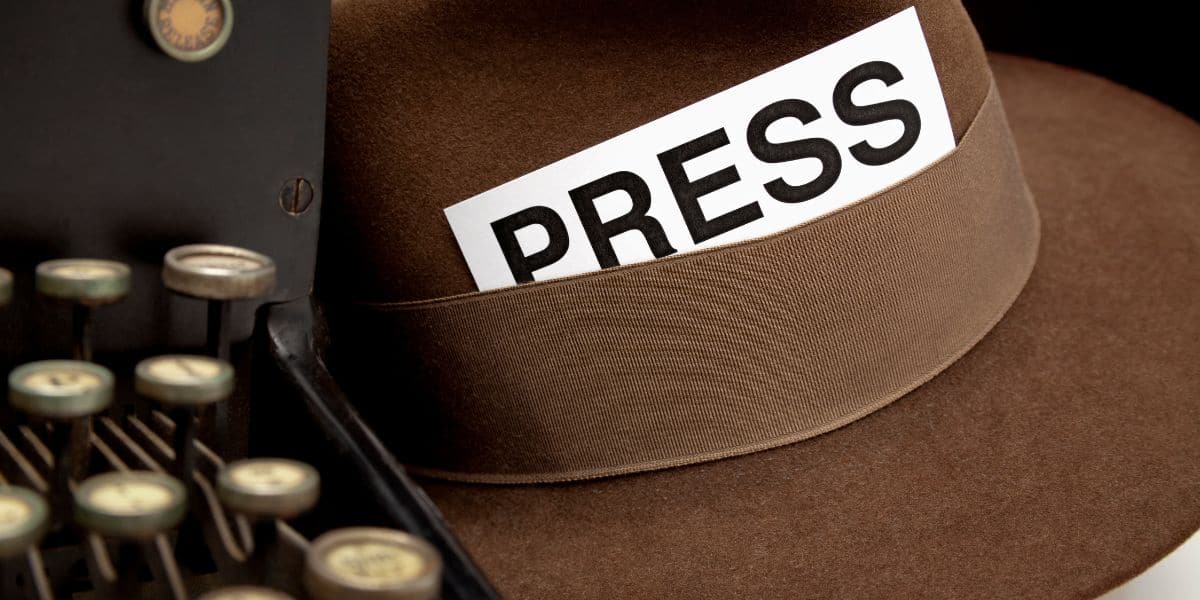When I look back over the past decade, I feel fortunate to have worked for and with so many incredible companies. The startup world exposes you to a wide variety of experiences. One hat that I’ve worn frequently is that of startup public relations.
Caveat Emptor (or: You Don’t Want What You Think You Want)
Startup PR is an interesting task. On one hand, chances are good that you don’t have a dedicated public relations person on your team during the early stages. Conversely, hiring an outside PR person to solve that problem can be expensive. But you want that early press coverage! Unfortunately, many PR pros won’t work with startups until they have a fully fledged product, and product-market fit.
Be careful about approaching the media before your product (and product-market fit) is ready. If a reporter picks up your story, what you want could be pretty different from what will happen. You’ll want them to write about how your company is going to make people’s lives better, or how you’re changing the world through technology and innovation.
But that’s not what usually happens.
What usually happens is that they’ll write about how you’re just starting out. They’ll talk about the things that aren’t working yet, because at the earliest stages, they have nothing else to write about. If they had a better angle, that would be the story that they would tell.
If this seems like a bit of a rock and a hard place, don’t despair! During the early stages, startup public relations isn’t rocket surgery. Most times, your marketing and customer success people already have the right messaging, they just need ways to reach more people efficiently. That’s why we’re bringing you this guide to using TextExpander for your startup public relations.
Why Keep Your Startup PR In House?
We’ve covered a couple of these points already, but it’s worth digging in a little deeper. The goal here is to prepare you to run your own PR, and to provide you with some tools. But first you need to have a firm understanding of why you should do your own public relations at this stage.
The first point is important: most startups spend their early years building and changing, rather than testing and tweaking. That is to say that product development or chasing product-market fit will take up most of your early days. Without both firmly in place, your company is unlikely to be a good match for traditional, outside PR.

Second, press coverage presents an interesting duality. On one hand, many reporters want to cover what’s new before anyone else gets the chance. They will often want some level of established brand awareness so that their story has a better shot at gaining traction. During the early stages of building a product, it’s unlikely that you’ll have already developed the following required to build the desired buzz.
Finally, PR isn’t cheap! While it’s a necessary expense at later points in the growth of your company, spending thousands (or tens of thousands) of dollars every month for potential early coverage is not the best use of your funds. Some startups are fortunate enough to earmark public relations as part of their fundraising. But most companies need to focus every penny on building the product rather than on securing early press.
While there are notable exceptions to these “rules” (Warby Parker, for example), I’d urge against placing your bets on this kind of exposure. As my grandma used to say, it’s okay to cross your fingers but don’t hold your breath.
Using the Tools You Have
With all the previous facts in mind, now the question that comes up is “how do we do our own startup PR?”
The most important part is to be ready when the time comes. The second most important part is to know when the time has come.
Build Relationships
The first tool at your disposal is yourself (or someone already on your team.) Start talking to reporters. Build organic relationships with them. Develop a friendly rapport by meeting them at in-person events like trade shows or conferences. Over time, that rapport can turn into opportunities to comment on other news and trends, giving you a chance to get your company’s name into the discussion.
It’s often seen as best practice to set up meetings in advance. Most events will have a journalist list available. Use this to get in contact well ahead of an event. This can take up some valuable time, so save yourself some work by preparing Snippets for the distinct steps of the outreach.
What you say, and how you say it, will change dramatically as you build these relationships. Your pitch, how you introduce yourself, and what you talk about are all going to evolve. But that shouldn’t prevent you from saving time right now.

Here’s a rundown of Snippets that you’ll want to have prepared:
- Your name
- Your company name
- The company description
- A quick, 1-3 sentence pitch
- Your contact information
You probably find that there are more snippets that can be helpful. But this is a solid list to get you started. Now, instead of copy/pasting the same email repeatedly, you can use your Snippets to create a customized message in even less time.
Get Your Customers Talking
In the early days of your company, your customers are your number one advocate. These users are more likely to be passionate about what you’re doing, and they’re often happy to share why they love your product or service. That said, you’ll need to meet them where they are, and that requires some outreach.
It’s common to take to social media to gather customer feedback. As you develop your following, make sure that you’re staying in touch with them. Then, when it’s time to mobilize that rabid fanbase, it doesn’t come off like a cold introduction. The more you’re in touch with them, the closer they will feel to you.

Customers make for great PR. But they can often benefit from a bit of help with messaging. That’s where you put Snippets to work for you again. Decide on the language that you want used to describe your product, then use that language when talking to customers. This plants the seed and increases the chances that they will use your chosen language when talking about you.
Here are some Snippets you’ll want to have ready when doing customer outreach, on top of the ones that you prepared for journalists:
- Branding and positioning
- Company or product hashtags
- Introduction emails
Here’s one tip that I like a lot: mirror their tone. If they’re formal, then be formal in return. If they’re adding emojis and “lol” to their messages, it’s fine to drop your own formality. Bear this in mind when preparing your Snippets, because you might need to have over one of each to adjust for the tone of your customers.
Over time, these efforts that you’ve been putting work into will pay off. You might not have raised much buzz yet, but that shouldn’t prevent you from teasing out newsworthy bits. Offer pre-briefings for upcoming news. When something big happens in your market segment, see if there is a way for you to be helpful to a reporter by offering insight or a better alternative.
As you might expect, everything we’ve talked about in this post is an ongoing project. Because of this, Snippets (and shared Snippet Groups for your team) will save you countless hours. Sharing Snippets means you can easily keep your messaging consistent, and you can update an entire team with just a couple clicks.
At some point, when the influx of PR requests overwhelms your internal team, it will be time to consider outside public relations. But even then, TextExpander can make your job easier. Prepare Snippets based on your rep’s recommended talking points, share them with your team, and keep them up to date across your entire organization.
What tips do you have to share? Have you found some Snippets to make your outreach easier? If you’re a startup public relations professional, we’d love to hear your input. Sound off in the comments.

